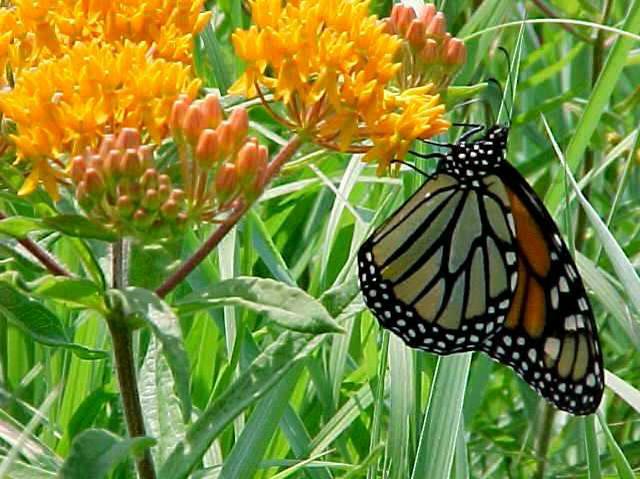Asclepias tuberosa: Butterfly weed
 Latin name: Asclepias tuberosa
Latin name: Asclepias tuberosa
Common name: Butterfly Weed
Flowers: Vibrant orange umbels that produce colored follicles if left.3
Fruit or cones: Ornamental follicles
Height & Width: 1’x1.5’3
Type: Herbaceous16
Wetland indicator category**: Not available17
Texture: Coarse16
Growth rate: Initially slow, medium when established.3
Light: Full sun3
Moisture: Low16
Soil*: Course to medium soils16
Zones: 4-93
Origin: Eastern North America16
Features: Asclepias is more commonly known as Butterfly Weed as it attracts a multitude of butterflies. The flowers can range from deep orange to almost red and form in bright small flowered umbels.3
Siting: Optimally planted in well drained soils, Butterfly Weed is very well suited to the Piedmont region of South Carolina16. It tolerates full sun and should be located where it receives at least 6 hours of direct sunlight a day. This plant has an exceptionally long taproot making transplanting very difficult once established. It is recommended that transplanting once established is not attempted as it may kill the plant3.
Care: Plant in suitable site with adequate soil organic matter so that the crown of the plant is at the soil surface18. Ensure the soil is adequately moist immediately after planting. Keep soil moist but not soggy until plant is established. Once plant is established water deeply but infrequently whenever the soil surface is dry or almost dry 2” below the soil surface18.
Pests: This species is resistant to most disease and insects found in the Piedmont. Crown rot has been found when planted in wet, poorly drained soils.3
Author: Susie Lombardo, Editor: Alexander Smolka
Sources 1-18 found on Sources page
